Mike Holmes of the Museum of the Bible has just released some new discoveries from the Museum’s ongoing provenance research to me and several other people via e-mail. There are several important revelations. Especially important are 1) a stunningly sharp observation by MOTB curator Brian Hyland and 2) the news that Yakup Eksioglu (“Mixantik”) appears to be the source of the Hobby Lobby Sappho fragments. I post Mike’s text below:
The Hobby Lobby Sappho fragments: some additional information
Michael Holmes, MOTB
Last summer, in response to a question from Roberta Mazza, I informed her that Sappho material was not listed as a specific item on any invoice in museum records, and that it was not at that time possible to identify the seller of the Sappho fragments in the Green Collection. Since then, MOTB curators, in keeping with the Museum’s commitment to research and make available provenance information on artifacts in the Museum Collection and in collections curated by the Museum (see: https://www.museumofthebible.org/collections/provenance), have continued to research the HL Sappho fragments. In recent months, it has been possible to verify some additional information about them. Working in reverse chronological order, I will mention two known points, which will provide context for presenting some additional information.
1. In 2014, images of the HL Sappho fragments were published in an article in ZPE (Bd. 189, pp. 1-28).
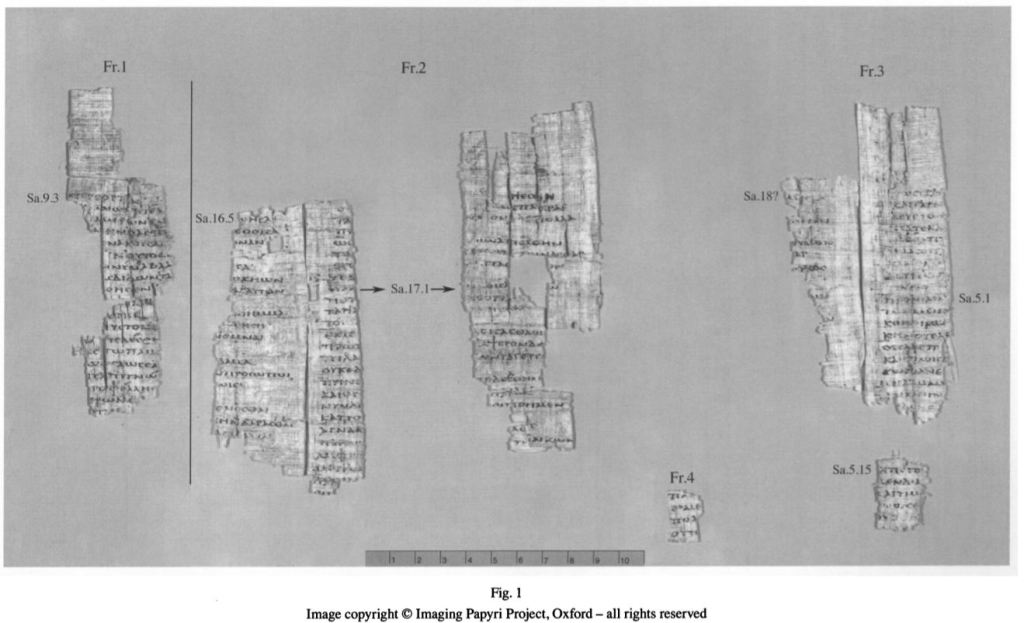
2. On Feb. 7, 2012, at a lecture event in Atlanta, Scott Carroll displayed 20+ HL Sappho fragments between glass plates and claimed that they “came out of a mummy mask I dismantled a few weeks ago” (see: https://brentnongbri.com/2018/12/13/the-green-collection-sappho-papyrus-some-new-details/).
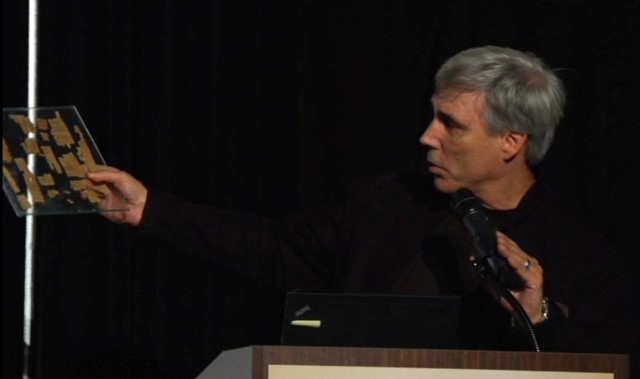
Several scholars have commented on the significance of this “sighting,” most recently Mike Sampson (as reported by Charlotte Higgins, in her recent Jan. 9th, 2020, Guardian article).
3. Brian Hyland, an MOTB curator, pointed out to me that about one-third of the HL Sappho fragments are visible in a video filmed at Baylor University on January 16, 2012 (https://www.youtube.com/watch?v=j_gwgGcpD1M; this is the well-known video of Scott Carroll dismantling a mummy mask). One example of a visible fragment: in the published ZPE image of the fragments, the small fragment just to the right of the label “Sa.16.5” can be seen at the 6:35 mark of the video.
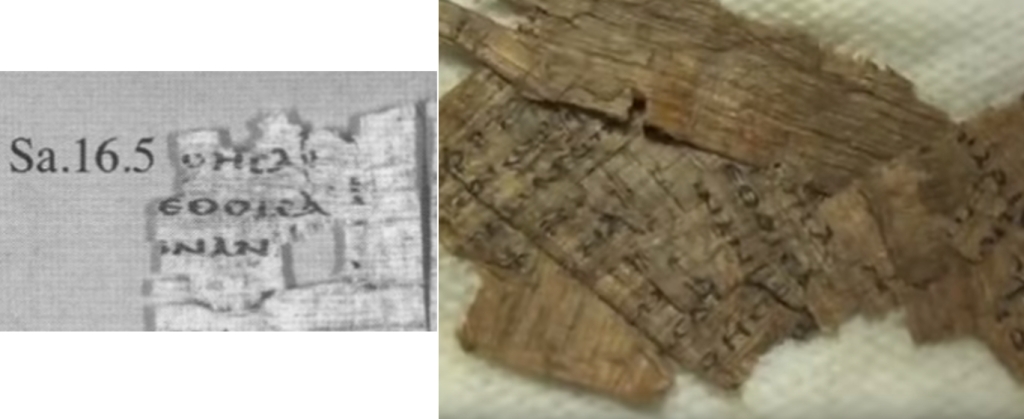
Some of the Sappho fragments are visibly wet, giving the impression that they were being extracted from the mummy mask at the time the video images were taken—an impression that is, however, almost certainly incorrect, in light of the next point.
4A. A purchase agreement dated January 7, 2012, and signed by Yakup Eksioglu is
accompanied by (i) an invoice for the following items:
- “Ancient Greek-Coptic language Papyrus fragments parobably between 800-
1000 fragment Shown as in the group pictures” - “Cartonagge Masks and other cartonagge fragments Shown as in the group
pictures”
and (ii) several “group photographs” of the items purchased, arranged in rows and
columns. The “group photographs” clearly show the shape and general appearance of
the items, but do not show enough detail to identify the contents of any particular item.
4B. A photo, shared by Dirk Obbink with Brian Hyland (via Dropbox on August 17, 2016), is a close-up image of one of the “cartonnage” pieces visible in one of the “group photographs” accompanying the invoice mentioned in 4A above. In the close-up image, the piece of “cartonnage”—more like a wad of multiple layers of stuck-together papyrus—is in the same relationship to the other pieces around it as it is in the “group photographs.”
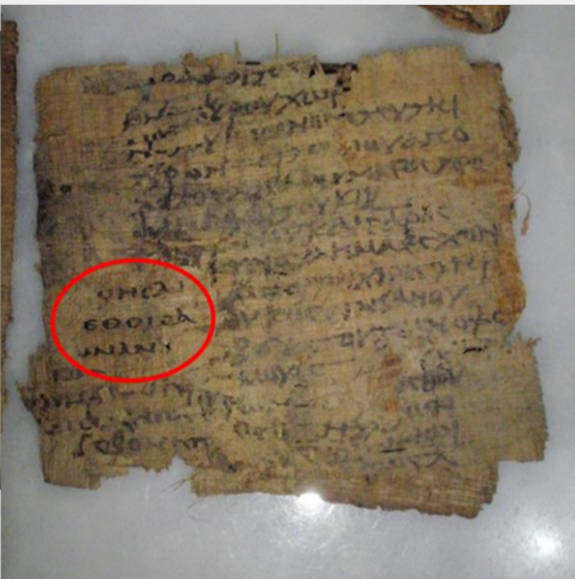
According to its metadata, this image was taken on December 7, 2011, 3:25 a.m. In this photograph the small Sappho fragment visible in the ZPE photograph just to the right of the label “Sa.16.5” (and also visible at the 6:35 mark in the January 12, 2012, Baylor video) is clearly visible.
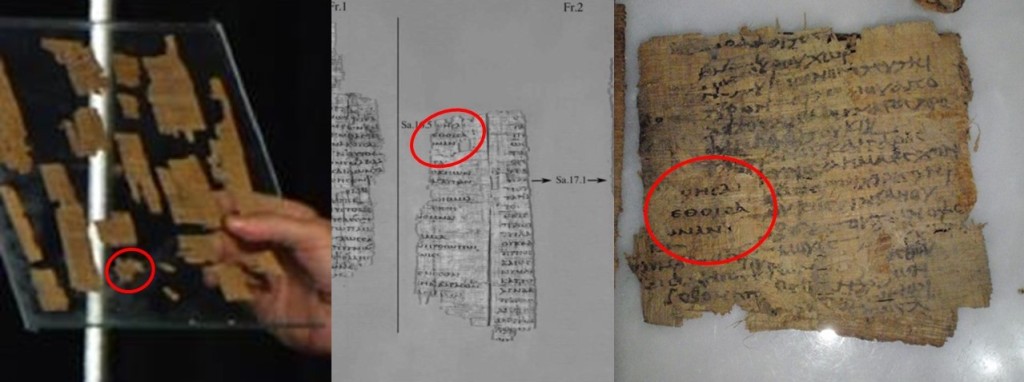
To summarize briefly:
- The presence of HL Sappho fragments in the Baylor video definitely moves the date of the earliest “sighting” from Feb 7 to Jan. 16 2012.
- The metadata on the “close up” photo apparently moves the earliest “sighting” to Dec. 7, 2011.
- The HL Sappho fragments were not recovered from a mummy mask.
- Eksioglu (“Mixantik”) is the apparent source of the HL Sappho fragments.
Many questions remain (including, e.g., this one: from whom did Obbink obtain the image he shared with Hyland?), and the MOTB curators are continuing their research. But for now, this note shares the additional evidence that we have been able to confirm to date; additional documentation will be available when a fuller statement is formally published.
The information that Mike and his team have shared raises a number of questions, which we will no doubt be unpacking in the coming days.


Respect to Mike Holmes, who has done a great deal to expose the truth about quite a few matters regarding the movement of various antiquities. Excellent post.
So, it is from mummy cartonnage after all? Are there documents visible anywhere from the mask. We don’t know anything about this kind of cartonnage later than Augustus’ reign.
No, it seems that it is NOT mummy cartonnage. It is from a chunk or “pad” of cartonnage that appears to be unrelated to the mask that Carroll dismantled at Baylor on that day.
Does that mean Carroll was only pretending to show it came from a mummy mask but knew the whole time it didn’t?
The video (in the way that it is edited) certainly does seem to imply that the Sappho fragments came from the mask, which, as Mike Holmes notes, is highly unlikely.
If Carroll did so, then it seems he was deep into fraud as well. And if that’s the case, why in the world would he publicly announce to Josh McDowell where he found the Mark fragment? I know you can’t answer that, but it seems crazy to try and “out” a man you’re in cahoots with.
Should there be a “4A” (with the invoice) between “3” and “4B”? It looks as though something has dropped out.
Yes. Thanks for that. I’m not sure how that dropped out.
“Some of the Sappho fragments are visibly wet…” This doesn’t seem like the best way to treat a papyrus fragment!!
I’m still trying to sort this out, so I’m thinking “out loud,” but is it possible that Carroll didn’t stage the discovery of the HL Sappho fragments but that he actually recovered from the cartonnage pictured in 4B? Maybe the mummy mask wasn’t the only item dismantled at Baylor. Couldn’t this happen if some of the cartonnage pieces sold by Eksioglu went to the Green Collection via Carroll and other pieces from Eksioglu went to Obbink? Then after-the-fact Obbink cooks up the fake provenance story involving the London dealer?
The “‘group photographs’ of the items purchased, arranged in rows and columns” is strikingly similar to the 2009 Instanbul photos that Scott Carroll posted on his Facebook page.
Finally, at least for now, this information leads me to ask again if Obbink was the source of the Coptic Galatians fragment and was Eksioglu the source of the 1 Samuel and Demosthenes cartonnage?
I’ll also note that according to Carroll’s Twitter feed, he was in Istanbul on Nov. 27, 2011. This may be significant given the connection of Eksioglu with Sappho and the January 7, 2012 purchase agreement.
He wrote, “My eyes feasted on classical texts, royal decrees, and Biblical and Gnostic texts; nearly 1,000 papyri hidden in this private treasure-trove.”
Is it possible that the same people at Baylor used the same dish detergent method of extracting papyri from both mummy mask cartonnage and other cartonnage, including the chunk in photo 4B?
If so, then that would explain the wet appearance of the pieces in the screen capture from the video. If I understand the timeline correctly, it would fit that timeline. And it would also smooth out the discrepancy with what Scott Carroll says, since that could in that circumstance be easily explained as a simple mistake about which papyri came from which cartonnage.
Pingback: Contextualizing the New Sappho Information | Variant Readings
Is the appellation “Sappho” because it’s of known text, or does this represent previously unknown fragments that are stylistically attributed to Sappho. Is there a transliteration/translation available?
See the discussion in Dirk Obbink’s original publication in ZPE, which can be downloaded here: https://newsappho.files.wordpress.com/2015/01/zpe-189-obbink.pdf
Perhaps a bit out there, but is it feasible for modern dealers to use ancient papyri to form “mummy masks”, give them the appearance of being ancient, and then dismantle them in order to create a fake provenance – via photographic evidence of wet papyri – for the extracted papyri?
Pingback: Friday Varia and Quick Hits | Archaeology of the Mediterranean World
Pingback: Papyrologie: update – Mainzer Beobachter
Do you want to know the source of papyrus, and others?
Professor Obbink has said that the Sappho fragments came from a Christie’s auction in November 2011. Do you have different information?
Yes, we do.
Pingback: More on Sappho, Romans, and the Baylor "Mummy Mask" Extraction | Variant Readings
Pingback: The newspaper and a table cloth: Yakup Eksioglu, Scott Carroll and some Green papyri? | Roberta Mazza
Dear academicians, researchers and theologians,
Sappho, galatians, homer’s, samuel, Mark, petrus, Jesus said my wife, 1Th Corintians,2Th Corintians etc, kept the world public opinion busy for a long time, it is very normal that these occurred because they were available as the parts obtained with the legal researches for more than at least one hundred year, these information are the archive studies became apparent,
The accretions obtained with the legal researches remained in archives. They could not be elicited and the world could not be informed as the technical technological studies remained incapable on these archives.
The mentioned studies are/were before UNESCO was founded and the Second World War.
Mr Steven Green and some academicians actualized this project are accused of theft now.
I would like to ask to who aim only blaming and hurting, upsetting the dear people as not considering these explanations!.
Could you please share the visual and orthographical legal information indicating that any part that you claimed that it was stolen belonged to them in the past from the private and legal person and institutions with the world public opinion?
YOU CANNOT SHARE THEM because it is not possible!.
In your opinion, these had been absolutely stolen if they do not belong to anybody and us, either. This is your understanding, in other words it is an abstract concept!.
I would like you know that there are the new information not known by the world yet and we do not know them at the moment, UNESCO does not know them, either. You and we do not know them, either, Why?
Because they did not come to light yet.
Please stop blaming people by writing the papers to cause to the abdication of reason, please get clear on information that you may give to humanity culturally and do not forget that information is not stolen! But it is only information pollution and it is experienced at the moment.
Dear Steven Green and working Academicians They are never thieves. They did not get any stolen part from anybody, association or foundations: Steven Green succeeded a project giving information to the whole world by spending million dollars of his money and his time. He did not have any pecuniary advantage and made it for the values he believed.
I kindly require you to set this cruel abuse aside and to go on informing the world with the right and clear information within peace friendly and fraternally.
Yakup EKSIOGLU
Has this video of Obbink and Sappho been posted, yet? I’m not sure if there is anything of value here, but Obbink is seen with the Green Sappho fragments. It may be worth a watch.
Wow! I haven’t seen this before (although parts of it are taken from the “Ancient Lives” promo video). There’s quite a bit that is odd about this clip. Thanks for drawing attention to it. I’m writing up a post on it now.
Pingback: New Article on Dirk Obbink in The Atlantic | Variant Readings
Pingback: The Atlantic Article and Green Collection Cartonnage | Variant Readings
Pingback: Looting and Faking – Mycenaean Miscellany
Pingback: More on Dirk Obbink and the Provenance of the Sappho Papyrus | Variant Readings
Pingback: Fleecing a Discipline – Mycenaean Miscellany
Pingback: A New Item in the P.Sapph.Obbink Timeline | Variant Readings
Pingback: Theodore Nash, Looting and Faking - The Center for Hellenic Studies
Pingback: The Retraction of Dirk Obbink’s Sappho Chapter and the Question of Authenticity | Variant Readings
Pingback: A New Article on the (ex-)Green Collection Sappho Papyri | Variant Readings